Botanical Names
Gynura procumbens Merr.
Common Names
| Malaysia | Sambung nyawa, daun dewa, dewa raja, akar sebiak, kelemai merah, kacham akar |
| English | Leaves of the Gods, Googoolipid, Mallucan spinach, Cholesterol spinach |
| Indonesia | Daun dewa, Akar sebiak, dan Kelemai merah, bai bing coa, ngokilo |
| Cambodia | Chi angkam |
| Thailand | Pra-kham dee khwaai, ma kham dee khwaai (Pattani), mu maeng, sang (Chumphon). Paetumpung |
| Vietnam | Kim That Tai. Cay Tieu Duong, Tiem Vinh Phong |
| China | Lam Fei Yip, Bai Bing Ca |
Family
Compositae
Introduction
Sambung nyawa is an annual plant type that abundantly found in South-east Asia countries such as Malaysia, Indonesia and Thailand. However it is originated from Myanmar and China. It can live with the height of 1 until 500 metres from the sea levels. It grows well in shady area, with 40-50% rate of light intensity, air temperature between 20-30 °C and has medium humidity with annual rainfall between 1500-2500 mm.
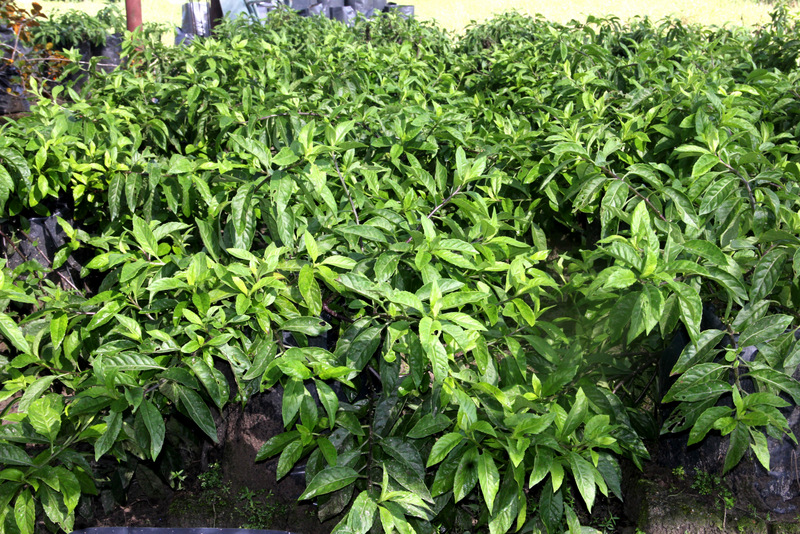
Morphological Features
Sambung nyawa is a scrambling perennial herb with stems up to 6 m long. The stems are purplish green in colour, triangular in shape, smooth or sparsely pubescent and sometimes collapses and the new roots are developed at the internodes. The leaves are almost egg-shape, measuring about 3-10 cm and 0.5-3.0 cm wide, light green in colour, pointed end, round base and serrated edge. The flower is arising from the axils and has 20 head of terminal flat-topped indeterminate inflorescence. The petals are yellowish red in colour.
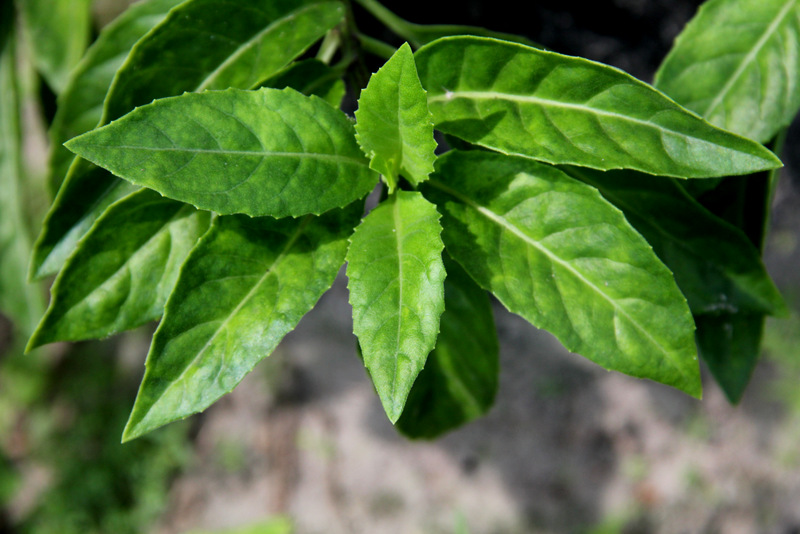
Medicinal Properties and Usage
In Malaysia the sambung nyawa are normally taken to reduce blood pressure, blood cholesterol, to cure constipation, diabetes, heart disease and cancer. It is reported that it is anticarsinogenic and sitotoxic towards cancer cells. The plants are also used to treat kidney related problems, fever, allergies, dysentery, throat infection, topical inflammations, menstrual cycle disorders, skin diseases and for the treatment of poisonous animal bites.
Soil Suitability and Climatic Requirement
In general sambung nyawa can be planted on almost on all soil types ranging from mineral, sandy bris or peat soils. It requires a well-distributed rainfall during its growing periods with the total of 2,500-3,000 mm annually. It is a water loving plants and can withstand water but not really wet or sump conditions. The best pH is around 5-7.
Field Preparation
Land Preparation
Good land preparation is important for the maximum crop growth in the field. The planting area has to be disc-plough at about 25-30 cm deep and followed by rotovation at 1-2 weeks later before planting beds is made. The recommended bed size is 120 cm wide with the working area of about 30 cm between the beds. The height of the bed is about 30 cm.
Production of Planting Materials
Stem cuttings are used as the source of the planting materials. The mature stem measuring 10-25 cm long having 4-6 internodes is used. The cutting starts to produce roots, new shoots and ready for field planting at 4-5 weeks after sowing.
Field Planting
Sambung nyawa seedlings are planted at a distance of 150 cm between rows and 60 cm within rows on raised beds measuring 1.2 m wide. This is equivalent to 11,110 plants/ha. Planting can also be done by using polybags and arranged at the spacing of 1 m by 1 m.
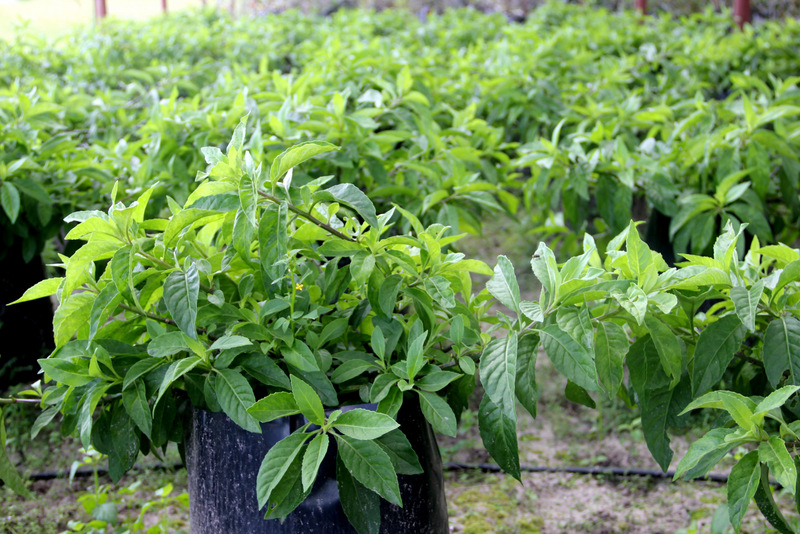
Field Maintenance
Fertilisation
Both the organic fertiliser (chicken manure) and the inorganic compound are required for optimum crop growth. The recommended rate of chicken manure is 10 t/ha given at 3 days after and planting subsequently at 6 months intervals. The inorganic compound fertiliser (N:P:K=10:10:10) is given at planting and subsequently at 4 months intervals. The recommended rate is 300 kg/ha per applications.
Weed Control
Good land preparation is very important for the control of weeds. Weed control is needed only at the early stages of plant growth. At the maximum growth stage, the dense canopy can control weeds naturally. Plastic mulch can also be used to control weeds.
Water Management
Sambung nyawa is a water loving herbs. Thus ample water is required for maximum crop growth. Several irrigation systems can be used depending on the soil types and water source. For commercial planting, sprinkler, rain gun or furrow irrigation can be used. Drip irrigation is suitable when plastic mulch is used.
Pest and Disease Control
There are no serious pest and disease problems affecting sambung nyawa. Possible infestations from any pest and diseases can be avoided by practicing proper sanitary practices.
Harvesting
The first harvest is about 9-10 weeks after field planting. The young growing shoots are cut at about 30 cm from the tip. The recommended harvesting intervals are every 2 weeks. The potential fresh yield for 18 harvests is about 110 t/ha and this is equivalent to about 3 10/ha of dried leaves. The ratio of fresh to dry yield is about 10-12. The harvested shoots consist of about 26% stem and 76% leaves.
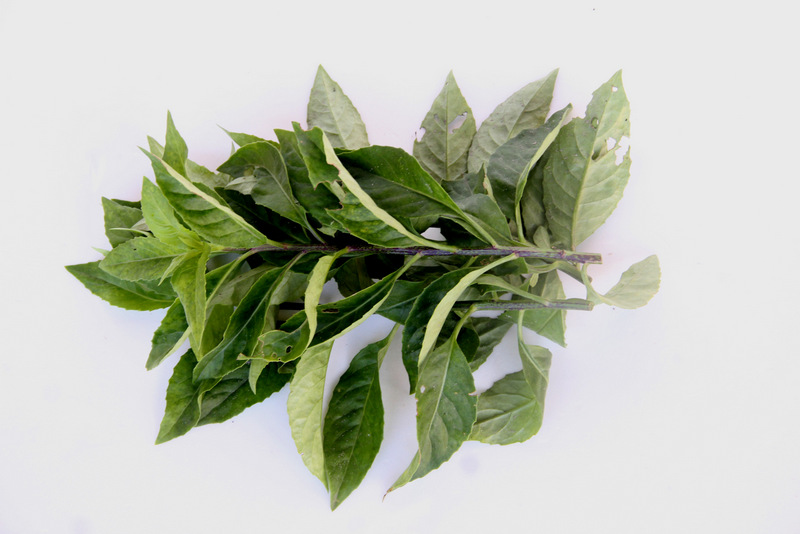
Postharvest Handling
The harvested raw materials should be dried as soon as possible to minimise the fungus infections. Several drying systems can be used and this includes cabinet driers, commercial oven or tobacco drying barns. As a guide, the drying should not be more than 45ºC. The drying should be to about 10-12% moisture level content. At this drying level, the ratio of fresh to dried raw materials is about 10 to 1.
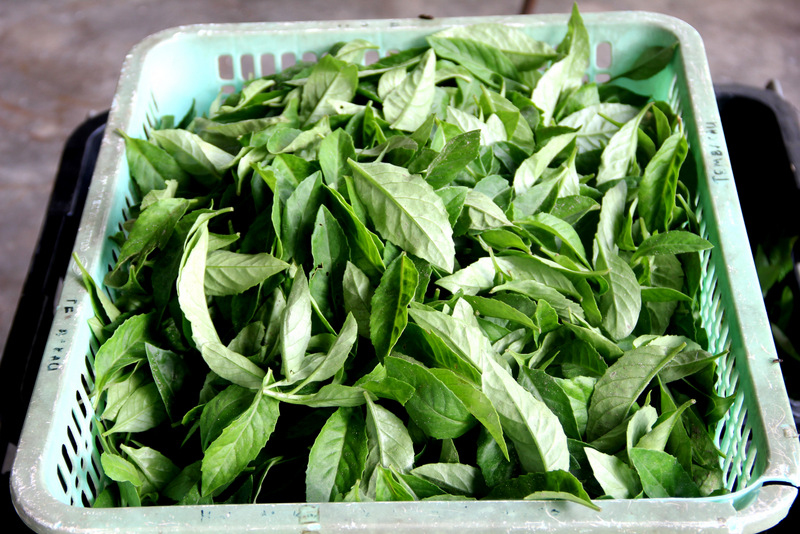
Estimated Cost Of Production
The cost of production per hectare per year (for 18 harvest) for sambung nyawa is about RM15,000.00. The main components are the cost of fertilisers, irrigation facilities and labour for harvesting. The estimated cost of production for dried raw materials is about RM1.50. The production cost was estimated based on the cost of current inputs during writing of this article.
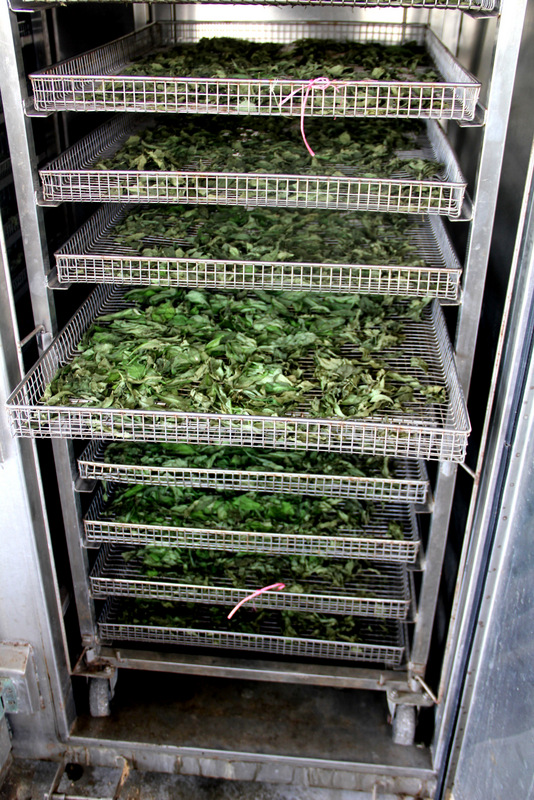
Read More
References
- Lemmens, R.H.M.J. and N. Bunyapraphatsara (Editors) (2003). Plant Resources of Southeast Asia No.12 (3): Medicinal and Poisonous Plants 3
- Musa, Y., Azimah, A.K. and Zaharah, H. (2008). Tumbuhan ubatan popular Malaysia. Serdang: MARDI, pp 214.


